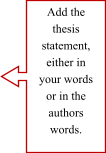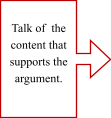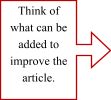One of the essential tools in academic and professional circles is an article critique. Article critiques serve as a tool for evaluating and analyzing scholarly works. Understanding how to write an article critique is crucial for students, researchers, and professionals.
Through this guide, we aim to understand what an article critique is. Furthermore, we will learn how to write an article critique and we will also look at an example of a critique of an article.
What is an Article Critique?
Have you ever asked yourself what is a critique of an article? Article critique is the process of evaluating and analyzing a piece of writing. This critical examination aims to assess the strengths and weaknesses of the article. Furthermore, this examination looks at the validity of the argument, clarity of presentation, and overall contribution to the field of study.
If you want to write an effective critique, you need to closely observe the content, methodology, and implications presented within the article.
Purpose of Article Critique:
An article critique critically examines the ideas presented in an article and offers a balanced evaluation. It helps the reader to develop a deeper understanding of the topic and identify the gaps in the research. Furthermore, it also serves to establish the credibility of the argument. An article critique provides valuable feedback to the writers. It enables them to refine and revise their work so that it would contribute to the advancement of knowledge in their field.
Importance of Article Critique:
Article critique is important in both professional and academic fields. Through article critique, you can ensure that the content is valid and reliable. It even lets you identify gaps in the research and contribute to intellectual growth. It allows you to look at the significance of the article critique in detail:
- Article critique serves as a tool that ensures that a piece of writing is up to mark. It evaluates the validity and accuracy of research findings. Through critical examination, you’ll be able to identify flaws in methodology, inconsistencies, and biases. This ensures that only high-quality research is published.
- In addition, article critique contributes to the advancement of knowledge in both academic and professional fields. It lets you evaluate the already existing information and identify gaps. This critical examination ensures that the article has something new to offer.
- Article critique even contributes to professional development. Through article critique, you can establish the validity of a research and analyze its applicability which plays a crucial role in evidence-based practice.
- Moreover, conducting an article critique contributes to the skill development of an individual. Through critique of an article, you’ll be able to hone the skills of critical thinking, analytical thinking, and effective communication, which are valuable in both academic and professional fields.
- It also paves the way for peer review critique. In academic settings, articles are peer-reviewed before publication, which ensures the quality, credibility, and integrity of the research. By writing an effective critique for peer-reviewed articles, experts can ensure that the content is accurate and valid and contributes new information to the field.
Key Components of Article Critique:
An article critique is typically written in a structured format which comprises an introduction, a summary, a critique, and a conclusion. Each of these sections serves a purpose and guides the reader through the evaluation process. Let’s dig deeper and learn more about the article critique format:
1. Introduction
The introduction paves the way for your critique. It provides the readers with the necessary information about the article’s topic and the research question. Furthermore, it also highlights the purpose of the critique and outlines the main points that will be discussed in each of the sections. This section engages the reader and serves as a guide.
2. Summary
This is the part of your critique that summarizes the whole article for the reader. It presents the core argument of the article. This section talks about the methodology used, the findings, and finally the conclusion that was drawn by the author. This part should be accurate and objective. While writing the summary you must be accurate and objective. Moreover, you should avoid putting forward your personal point of view.
3. Critique
This is the part that forms the crux or the basis of your article critique. It helps the reader evaluate the article meticulously. With the help of this section, the reader can identify the strengths and weaknesses of the article’s argument, methodology, findings, and conclusion. It is essential that this section of your article critique is well-structured and is supported by evidence derived from the article itself, as well as relevant research literature. When the content of the article is critically analyzed it offers valuable insights and contributes to the advancement of knowledge.
4. Conclusion
In this section, the findings of the critique are outlined and a final reflection on the article is offered. Moreover, it may also highlight gaps and opportunities for improvement and even draw attention to the significance of the article’s findings.
How to Write a Critique – A Step-by-Step Process:
Writing a critique of an article can sometimes be tricky. By following the format of an article critique outlined here writers can master their critique writing techniques and produce content that would contribute to the advancement of knowledge in their respective field.
If you want to learn how to write a critique on an article, this guide has got your back!
Writing an article critique is a step-by-step process. Let’s dig deeper into each of these steps:
Step 1: Understanding the Article
Before you start writing your article, you need to carefully read and understand it. While you are reading the article pay close attention to its research question, methodology, findings, and conclusions. Furthermore, you should even take notes regarding the key points and the argument presented. These notes will come in handy when you start writing the critique.
Step 2: Annotate the Text
While you are reading the article underline or highlight various sections of the article that stand out to you and which you think are important for your article critique. You can even use different colors to highlight the positive aspects and parts that need improvement.
Step 3: Evaluating the Argument
Once you have read and understood the article, you should consider analyzing the argument. Think of the evidence presented by the writer and analyze whether the evidence used to support the argument is strong or weak.
Step 4: Formatting the Critique
Now that you have read, understood, and evaluated the article it is essential to consider the structure of your critique. Usually, the format of a critique consists of an introduction, summary, critique, and conclusion. It is important that you divide your critique into distinct sections, consider using subheadings to organize your critique effectively.
Annotated Article Critique Example
In this section, we’ll present a concise example of a critique of an article. By reviewing the critique you’ll be able to learn the application of the various critique writing techniques discussed above. This example aims to highlight the key features and the common mistakes that should be avoided while writing a critique.

ARTICLE CRITIQUE EXAMPLE
Introduction

Technology plays an important role in keeping students engaged and involved. In the article “Technology & The Curriculum” Chloe D’Angelo aims to shed light on how the education system and workforce continually evolve to become more technology-inclusive. The author further highlights the importance for students to stay up to date with modern digital trends and talks about the strategies instructors can use to incorporate technology into the curriculum. This critique will shed light on the strengths and weaknesses of the article. Furthermore, this critique will offer valuable insights into the contributions the study made in the educational field.

Summary

This article presents a comprehensive examination of how technology can prove helpful in the field of education, and how it can influence engagement and keep students involved. The author delves into the role of technology in promoting active learning, collaboration, and critical thinking skills among students. The article also highlights how learning outcomes can be improved by effectively incorporating technology.
Critique


Strengths
- The article offers a thorough literature review, which helps the readers understand the scope of the topic. Moreover, by incorporating existing research on the topic, Chloe D’Angelo establishes a strong foundation for the argument.
- The article also offers practical recommendations for educators. It offers strategies that can be utilized by educators to incorporate technology into the student learning experience. By utilizing these strategies learning outcomes can be significantly improved.

Weaknesses
- Although the writer has added ample literature review, the article still lacks empirical evidence or case studies. Adding empirical evidence and case studies would increase the validity and reliability of the argument.
- The article only focuses on the benefits of incorporating technology to improve learning outcomes, but it totally neglects the drawbacks or challenges associated with technology integration.

Contributions in the Field of Education
‘Technology & The Curriculum’ contributes to the field of education by raising awareness of the importance of technology in enhancing student engagement and academic success. The article offers valuable recommendations for educators and emphasizes the potential of technology to improve learning outcomes. However, further research is required to incorporate empirical evidence and case studies. Furthermore, the article needs to address potential challenges and drawbacks associated with technology integration. Adding the suggested sections to the article would enhance the scope of the discussion.
Conclusion

‘Technology & The Curriculum’ by Chloe D’Angelo provides a valuable perspective on the relationship of technology with student engagement in educational settings. Although the article includes practical recommendations for instructors, and the argument is backed up by ample literature review, there is still room for improvement. The study can be made better by adding empirical evidence and case studies. The addition of challenges faced during technology integration would make the study more wholesome.
This sample of an article critique can be used as a yardstick to help you write a compelling critique of an article. You can even use this article’s critique example in academic writing as well.
Key Features of an Article Critique:
A critique of an article should have the following key features:
- Thoroughness: An article critique should be thorough. A thorough critique ensures that all relevant aspects of the article are covered, including methodology, findings, and implications.
- Clarity: Clarity is the key. It is important to use clear and concise language to communicate your critique efficiently.
- Evidence-Based Analysis: An article critique should critically examine the argument of the article and try to provide an analysis and evaluation with reason and evidence.
- Objective Evaluation: Be accurate and objective while conducting an article critique. Remember that your critique should be unbiased and free of any prejudice.
- Clear Structure: An effective article critique follows a clear format and structure. A typical article critique is written in a format that has sections such as introduction, summary, critique, and conclusion.
- Constructive Feedback: Other than identifying the weaknesses of a study, an article critique also offers constructive feedback for the improvement of the article.
- Ethical Considerations: Your article critique should uphold ethical standards. Like other scholarly writings, there should be no plagiarism in your critique. Consider giving due credit to the research material that supported your critique.
Common Mistakes to Avoid While Writing a Critique:
When writing an article critique it is essential to avoid some of the common mistakes:
- Avoid letting personal biases and prejudices influence your article critique.
- You should ensure that your article critique is supported by evidence from the article itself and other related research literature.
- Avoid overgeneralizing and making assumptions based on limited evidence. Your critique should be specific and focused.
- Don’t ignore counterarguments. An effective critique considers other arguments and perspectives as well.
- Maintain a consistent structure.
- Don’t just focus on the weaknesses of the article. An effective critique is balanced, it talks of both the weakness and the strengths. It Identifies room for improvement and gives constructive feedback.
- Pay attention to your writing style and ensure clarity and coherence.
Write an Effective Article Critique with My Essay Writer:
Mastering the art of critique writing is essential for both academic and professional success. Follow the steps outlined in this guide and use the example of a critique of an article to write an effective critique. Master the art of critique writing with this step-by-step guide or visit My Essay Writer today and get professional assistance to elevate your scholarly discourse.
FAQs
Article critique is the process of evaluating and analyzing a piece of writing. This critical examination aims to assess the strengths and weaknesses of the article. Furthermore, this examination looks at the validity of the argument, clarity of presentation, and overall contribution to the field of study.
Critique writing is important because it helps you to ensure that the content is reliable and valid. Moreover, critique of an article helps you identify gaps and lets you contribute to intellectual growth.
The purpose of an article critique is to identify gaps in the research and establish the validity of the argument. It even provides constructive feedback for the improvement of the article.
An article critique is usually written following a format and a structure. The format of an article critique consists of various sections, including an introduction, summary, critique, and conclusion.
References are not an essential part of an article critique, but if you have used various resources to support your argument, it is a good idea to add references. References support your argument and establish the validity of your critique.
To write an article critique it is important to thoroughly read and understand the article and take notes. While you are reading the article it is also a good idea to annotate the text that seems important. Next, you need to evaluate the different aspects of the article including the argument, methodology, findings, and implications. Lastly, you need to present your critique in an appropriate format.


